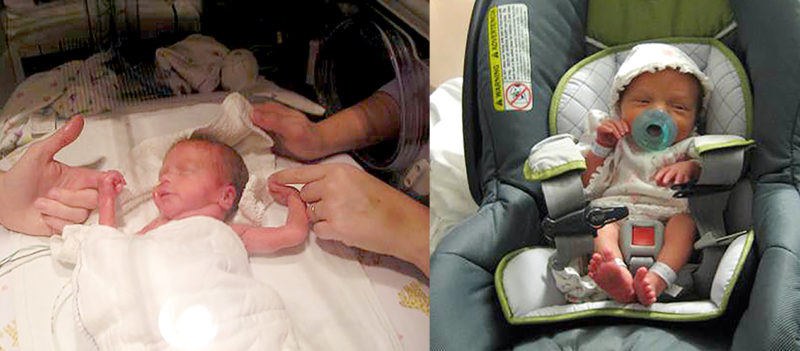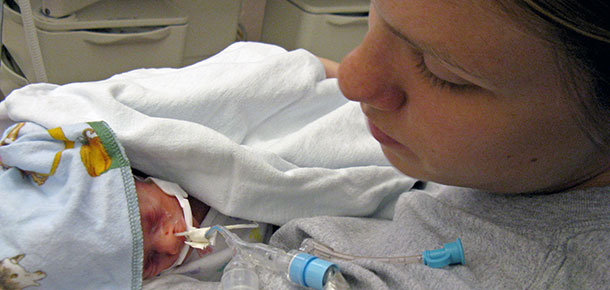Cincinnati Children’s is leading the way in meeting national goals for delivering the smallest preemies at the places that are best equipped to handle them.
A compendium of U.S. Public Health Services/Department of Health and Social Services goals and objectives, Healthy People 2010, calls for delivering 90 percent of very low birth weight infants in subspecialty centers. The greater Cincinnati region is now at 88.2 percent.
Since a proactive outreach program began at area maternity departments in 2002, more pregnant mothers in premature labor at less than 32 weeks gestation have delivered at top-level (Level III) NICUs in the Cincinnati area. Transporting the baby in utero – rather than in an ambulance after birth – significantly improves outcomes for these infants.
By transferring mothers before delivery, area obstetricians have lowered the number of very low birth weight (less than about 3 pounds, 5 ounces) infants born at Level I and Level II units from 25 percent to 11.8 percent since an earlier study in the mid 1990s. This is important because the odds of death and/or major complications for extremely premature infants born at non-specialty units are three times greater than at Level III centers. Similarly, the odds of serious illness were also two- to threefold at non-specialty maternity centers.
The study, conducted at 18 participating hospitals from 13 contiguous counties in Ohio, Indiana and Kentucky, was recently published in Pediatrics, the official journal of the American Academy of Pediatrics. Cincinnati Children’s researchers investigated live births in the region from 2003 to 2007 and compared them to findings from a similar study done between 1995 and 1997. They also found that within only one year of initiating outreach efforts in late 2002, maternal transfer rates increased quickly from 75 percent to nearly 90 percent.
Other published reports have also consistently documented excess morbidity and mortality of very low birth weight preemies at non-specialty centers, further supporting the need to transport mothers to Level III centers if they’re in preterm labor at less than 32 weeks.
Further study and understanding of factors such as access to care, transportation and health literacy should provide additional crucial insight for development of future strategies to further reduce the incidence of preterm delivery outside Level III subspecialty centers.
We’ve learned what’s best for the smallest of preemies. Now, we’re taking that knowledge and changing the outcome for as many very low birth weight babies as we can.
Dr. Greenberg is director of the division of neonatology and associate director of the Perinatal Institute at Cincinnati Children’s.




